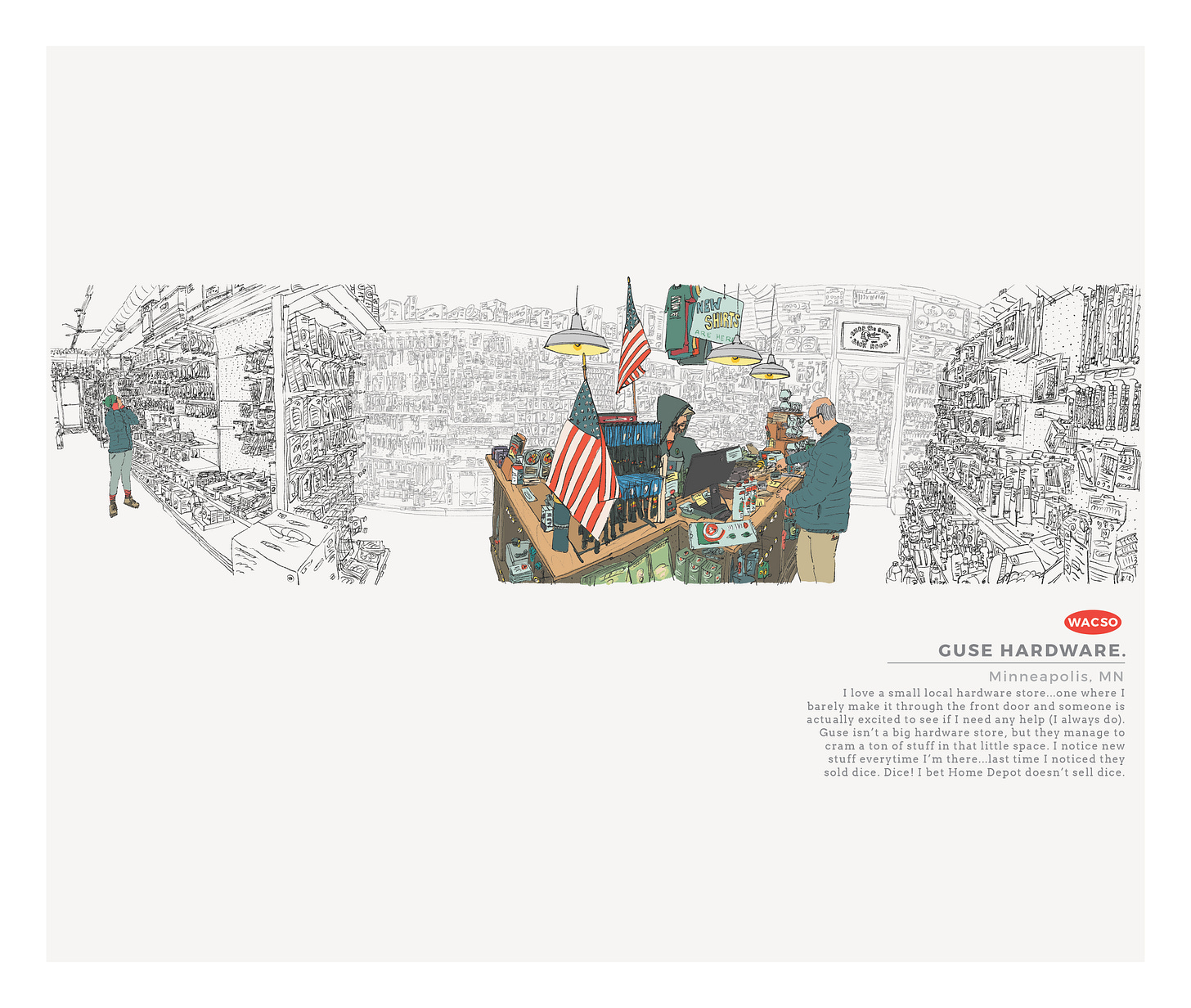074: What else can it do?
Our notion of strategic and creative tools and process changes with LLMs and GPTs
Here’s an extra observation for this week. I’ll be back Tuesday with next week’s class recap.
The first art director I ever worked alongside was Robb Burnham, aka WACSO (he just started a newsletter). His recent Guse Hardware illustration, combined with Paul Aaron’s useful perspective on the evolution of GPT-V4 sparked this observation.
Tools which perform more than one distinct task, and can also teach you how to use them more effectively, change the nature of creativity
Back to the hardware store. I love hardware stores.
Inside those magical emporiums are tens of thousands of unique tools typically purpose-designed for a singular task. A hammer drives nails. A brush applies paint. Yes, yes—you can use a hammer in other ways. Many of us enjoy asking, “but what else can this be used for?”
But the hammer was originally designed to solve a singular purpose.
A word processor was designed to help write words.
In the past 24 hours I’ve used ChatGPT for at least three distinct tasks: It has helped me research and refine strategy; it has helped me compose and iterate creative ideas; and then it helped me generate images to align with those ideas (Dall-E3 is impressive indeed—try for free inside Bing; but still no Midjourney IMHO).
Quite literally three very separate set of tasks and roles inside an agency, yet all delivered seamlessly and synchronized within a single tool. On my phone.
But wait.
Part way through my exercise, I got frustrated with the tool’s output. So I typed, “I’m not feeling very inspired by these answers. What prompt would you write to elicit marketing analysis with keener insights?”
And the tool told me how to use it more effectively.
Hammers and word processors weren’t designed and don’t yet have the capability to train the user how to use them better. But that ability is inherent inside ChatGPT.
Which changes the game because it changes how we function.
Imagine an entry level marketing or agency strategist who, armed with a GPT, can be trained by that same GPT to comprehend an industry, its audiences and culture, and then create solutions to current tasks.
Mix and repeat for copywriting and art direction and design.
I can’t stress it enough:
You should block time to increase your fluency in AI.
Oh!
Advertising legend David Droga says not to be afraid. “Creativity thrives under duress and change, and I think that this is a necessary thing for us to find the next version of creativity.”


